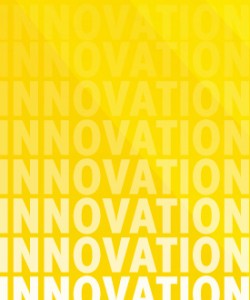“Work smarter, not harder” is a common aphorism used by those in constant pursuit of productivity. Generally, it cautions you to avoid hyper-focusing on the work itself, and to make conscious choices about exactly how you are working.
Of course, focusing on both your work and your approach can be a difficult game of mental juggling. Often, you have to simply “be smarter” if you want to “work smarter”. Becoming smarter is not quick and easy, but it’s not impossible either. In fact, a lot of new studies are suggesting that you’re not stuck with the brain that you were born with, and that you can develop your brain much like you’d develop your muscles; with increasingly harder workouts.
Which is exactly what the Lumosity Brain Trainer app is designed for. It’s been downloaded over 4.8 million times in less than 8 months, and was #1 in the app store at one point.
I had the privilege of interviewing Joe Hardy PhD, Senior Director of Research and Development Lumos Labs, about their Brain Trainer and the process of designing apps that actually make you smarter.
Peter North: Your “Brain Trainer” exercises are surprisingly fun. How do you meet the need for intense mental exercise while still keeping the training game-like and enjoyable?
Joe Hardy: All the exercises begin with the principles of neuroscience and brain plasticity. We know what it takes to make an experience that changes the brain in positive ways. We know that it needs to create the right level of challenge — not too easy and not too hard — and adapt to the user as they improve. The task needs to challenge the brain in novel ways, keeping it off balance, in much the same way that muscle confusion is used in physical exercise. Once we have a core task identified, we have an excellent team of game designers that know how to make it fun.
Peter North: What kind of short-term and long-term results can a Brain Trainer user expect?
Joe Hardy: In the short term, many people report experiencing feeling more alert. Many people talk about an improved ability to remember small details. These effects are backed up by controlled trials where objective tests show improvements in attention and working memory following brain training. Over time, being cognitively active builds up what neuroscientists call cognitive reserve. This reserve protects you against memory losses associated with aging.
Peter North: How do you distinguish between increased mental fitness and simply getting better at the exercises themselves?
Joe Hardy: There are two ways to distinguish between just getting better at the exercises and really improving the brain. The first method involves controlled trials with objective tests of cognitive performance. In these kinds of studies, some participants get training [with Lumosity], while others do not. Both groups are assessed for attention, memory, and other aspects of cognition before and after training. In studies of Lumosity training, participants doing training consistently get better at objective tests of cognitive performance that were not part of the training while control subjects do not.
Of course, while it’s great to measure objective performance, we care most about what happens in their real life. Often, we learn the most by simply talking to users and asking what they get out of it. Generally, we use a portfolio of different approaches to understand what brain training can and cannot do.
Peter North: How do you develop a Brain Training course to improve a very specific mental capacity such as memory or attention?
Joe Hardy: There are two basic approaches that we take. The first approach involves taking tasks that we know challenge the targeted area and turning these tasks into exercises. Sometimes, we know a task targets working memory, for example, because behavioral studies have shown that this is the limiting resource for that task.
The second approach involves using brain imaging data to identify a particular task that activates certain parts of the brain. Once we’ve identified the central task, we put our game designers to work.
Peter North: Have there been any independent studies testing the effectiveness of your Brain Training exercises?
Joe Hardy: We work with dozens of university-based researchers all over the world. We typically make our software available to them for free for research purposes. They do whatever studies they see fit. This is a great way to leverage the technology to learn about the benefits and limitations of brain training. You can read about most of these efforts in our white paper The Science Behind Lumosity.
In addition, we’ve done our own studies that show positive effects of Lumosity training for improving attention, memory, and executive function.
After trying the Brain Trainer myself for several weeks, I did feel increased memory, focus and mental clarity. My performance in the Brain Trainer exercises steadily improved at the same pace as my self-reported mental fitness improvements.
The training itself requires a remarkable amount of concentration. In some exercises, you’re asked to identify the direction of the center bird in a large flock. Others ask you to ignore the word “YELLOW,” and successfully identify that it’s written in red ink. Regardless of the details of each exercise, the common thread is intense mental focus, the kind you might not get all day.
The Brain Trainer app is free, but the service itself is subscription-based. The training is highly accessible, offered both on their website and all Apple mobile devices. They have “basic training” to start with, and then courses that specialize in whatever area you’d like to improve. Typical training sessions last about five minutes, and they might be the best five minutes of your day if you ask your synapses.
JOE HARDY Phd, Joseph Hardy PhD, joe hardy lumosity, joe hardy PH D






Discussion